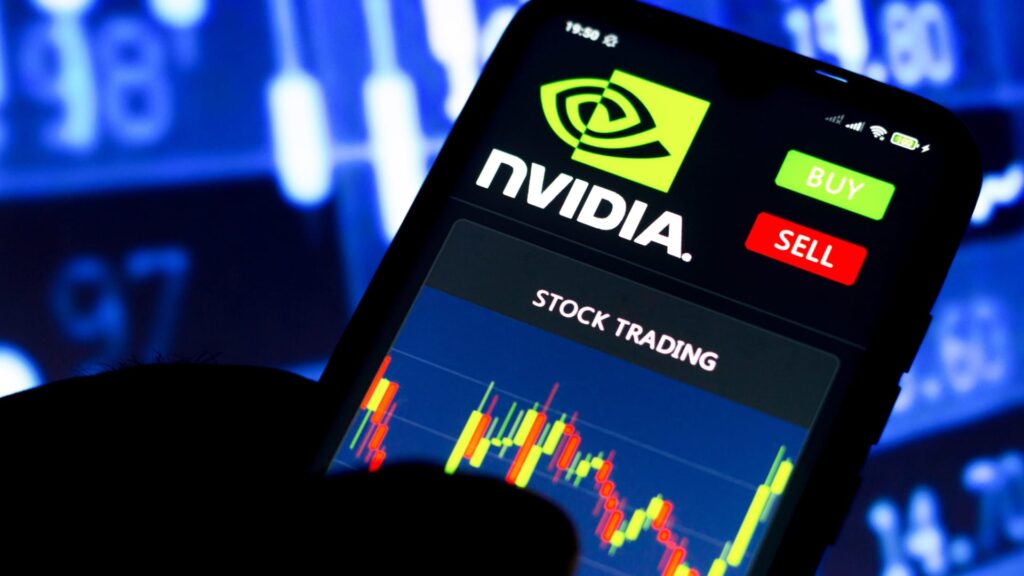Introduction
Nvidia, a dominant player in the chip industry, has seen its stock price surge in recent years, riding the wave of Wall Street’s AI boom. However, a recent market sell-off has left Nvidia’s stock battered, with the company losing an unprecedented $279 billion in market capitalization in a single day. Investors are now left wondering whether this massive decline presents a rare opportunity to buy the dip. In this article, Samuel Van Wyk, an expert from MagnifyGroup, will help shed light on Nvidia’s current market situation and whether investing in the stock now could be a prudent move.
Understanding the Recent Nvidia Sell-Off
Nvidia has been a key player in the AI-driven stock market rally that took place earlier this year, accounting for roughly 30% of the S&P 500’s total returns during the first half of 2024. The stock had been on a meteoric rise, with its year-to-date performance still showing a gain of 114% despite the recent pullback. However, the sell-off that occurred on Tuesday was the largest single-day market cap loss for an American company in history, followed by a continued decline on Wednesday.

The drop has raised concerns among investors, especially as analysts have begun to issue warnings about the future of Nvidia’s growth trajectory. Samuel Van Wyk points out that the sharp rise in Nvidia’s share price over the past few quarters was driven by outsized gains in key areas, such as its data center business, which has been the company’s main revenue driver.
What Is Driving Nvidia’s Stock Decline?
There are several factors contributing to Nvidia’s recent decline. First, the stock had risen so rapidly that it was bound to face some level of correction. The AI frenzy that drove much of Nvidia’s gains also began to show signs of fatigue, with concerns arising about whether companies investing heavily in AI will see the necessary returns on investment. This was notably highlighted by Samuel Van Wyk, who questioned whether tech giants like Amazon, Google, and Microsoft would recoup their massive AI-related expenditures. These doubts have weighed heavily on Nvidia’s stock price as well.

Additionally, while Nvidia’s revenue growth remains impressive, the pace is slowing. For instance, Nvidia’s data center business generated $26.3 billion in revenue in the last quarter, up 154% year over year, but this was a significant drop from the 427% revenue jump seen in the previous quarter. As Nvidia’s growth begins to decelerate, investor sentiment has cooled, leading to the recent sell-off.
Valuation Concerns and Investor Sentiment
Despite the recent decline, Nvidia remains one of the most highly valued organizations in the stock market. Even with the dip, the company is trading at around 68 times its diluted earnings per share (EPS). While this is a significant drop from a price-to-earnings (P/E) ratio of 180 just a year ago, it still reflects the premium that investors are willing to pay for Nvidia’s future growth potential.
According to Samuel Van Wyk, “Nvidia’s valuation remains high, but the company is now trading at a discount compared to its historical levels. This could present an opportunity for long-term investors, especially if they believe in the continued growth of AI and data center markets.”

Investor sentiment has shifted, but the fundamental strength of Nvidia’s business remains intact. Van Wyk notes that “the recent sell-off should be viewed within the context of Nvidia’s long-term prospects. The company’s leadership in AI and data centers positions it well for continued growth, even if the pace of that growth slows in the coming quarters.”
Is It Time to Buy the Dip?
Many investors are wondering if it’s wise to purchase Nvidia shares following their significant drop in value. The well-known advice from Warren Buffet, which states to be cautious when others are optimistic and confident when they are hesitant, might be relevant here. Nvidia’s fall could be seen as a chance to buy into a leading company at a more reasonable price than in previous months.
However, caution is warranted. Analysts have warned that while Nvidia remains a market leader, its growth is unlikely to continue at the same blistering pace. With AI development still in its infancy, there are risks that the market may not develop as rapidly or as profitably as initially anticipated. This uncertainty may continue to create volatility in Nvidia’s stock price.
For long-term investors, though, the underlying trends in AI and data center expansion remain strong. Nvidia is expected to continue benefiting from the rising demand for AI-powered devices and the infrastructure needed to support them. “The future of AI is bright,” says Van Wyk, “and Nvidia is positioned to be at the forefront of this transformation. For patient investors, the current dip may represent an attractive entry point into a high-potential market.” Looking for an investment and trading platform? Check out MagnifyGroup.com reviews online to see if it’s a good fit for you.
Conclusion
Nvidia’s recent sell-off may have shaken investor confidence, but the company’s fundamentals remain strong. While its valuation is still relatively high, Nvidia’s leadership in the AI and data center markets suggests that it could continue to be a significant player in the tech industry for years to come. Samuel Van Wyk advises investors to carefully weigh the risks and benefits before making a choice, stating, “It’s essential to have a long-term perspective and recognize that while short-term volatility may continue, Nvidia’s potential for future growth is substantial.”
For those willing to weather potential near-term turbulence, the recent dip in Nvidia shares could present an opportunity to buy into a leading tech company with a promising future. However, it is crucial to proceed with caution, as the pace of Nvidia’s growth is expected to slow, and there are risks surrounding the broader AI market.
Important Notice: The content of this article is provided for informational purposes only and should not be considered a recommendation. The author bears no responsibility for any actions taken by the company during your trading journey. It’s important to acknowledge that the information contained in this article may not be entirely accurate or current. Your trading and financial decisions are entirely your responsibility, and it is vital not to solely depend on the information presented here. We make no guarantees about the accuracy of the information on this platform and disclaim any liability for losses or damages arising from your trading or investment decisions.







